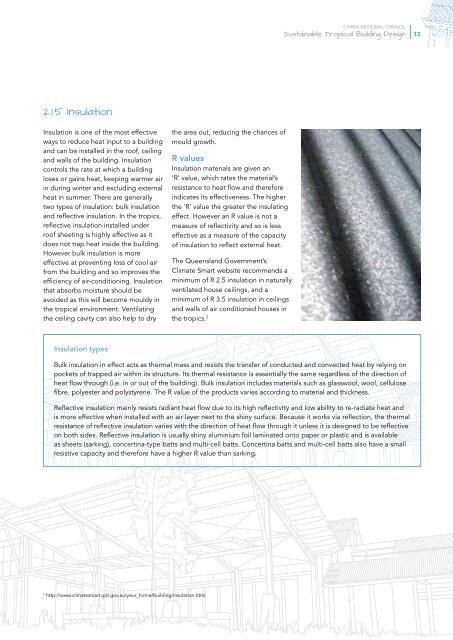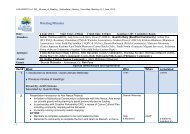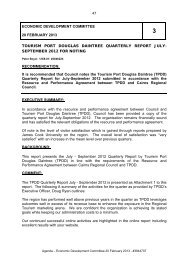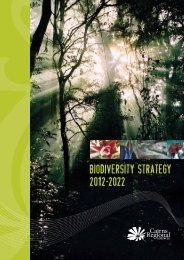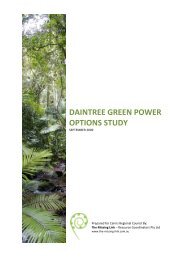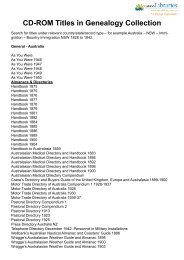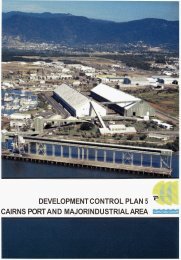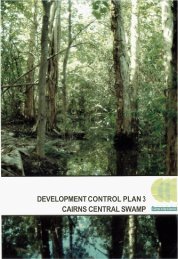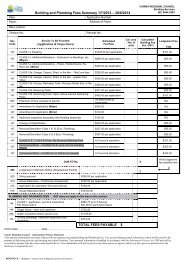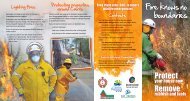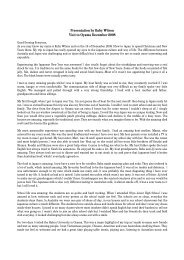SuStainable tropical building deSign - Cairns Regional Council ...
SuStainable tropical building deSign - Cairns Regional Council ...
SuStainable tropical building deSign - Cairns Regional Council ...
- No tags were found...
Create successful ePaper yourself
Turn your PDF publications into a flip-book with our unique Google optimized e-Paper software.
<strong>Cairns</strong> <strong>Regional</strong> <strong>Council</strong>Sustainable Tropical Building Design132.1.5 InsulationInsulation is one of the most effectiveways to reduce heat input to a <strong>building</strong>and can be installed in the roof, ceilingand walls of the <strong>building</strong>. Insulationcontrols the rate at which a <strong>building</strong>loses or gains heat, keeping warmer airin during winter and excluding externalheat in summer. There are generallytwo types of insulation: bulk insulationand reflective insulation. In the tropics,reflective insulation installed underroof sheeting is highly effective as itdoes not trap heat inside the <strong>building</strong>.However bulk insulation is moreeffective at preventing loss of cool airfrom the <strong>building</strong> and so improves theefficiency of air-conditioning. Insulationthat absorbs moisture should beavoided as this will become mouldy inthe <strong>tropical</strong> environment. Ventilatingthe ceiling cavity can also help to drythe area out, reducing the chances ofmould growth.R valuesInsulation materials are given an‘R’ value, which rates the material’sresistance to heat flow and thereforeindicates its effectiveness. The higherthe ‘R’ value the greater the insulatingeffect. However an R value is not ameasure of reflectivity and so is lesseffective as a measure of the capacityof insulation to reflect external heat.The Queensland Government’sClimate Smart website recommends aminimum of R 2.5 insulation in naturallyventilated house ceilings, and aminimum of R 3.5 insulation in ceilingsand walls of air conditioned houses inthe tropics. 2Insulation typesBulk insulation in effect acts as thermal mass and resists the transfer of conducted and convected heat by relying onpockets of trapped air within its structure. Its thermal resistance is essentially the same regardless of the direction ofheat flow through (i.e. in or out of the <strong>building</strong>). Bulk insulation includes materials such as glasswool, wool, cellulosefibre, polyester and polystyrene. The R value of the products varies according to material and thickness.Reflective insulation mainly resists radiant heat flow due to its high reflectivity and low ability to re-radiate heat andis more effective when installed with an air layer next to the shiny surface. Because it works via reflection, the thermalresistance of reflective insulation varies with the direction of heat flow through it unless it is designed to be reflectiveon both sides. Reflective insulation is usually shiny aluminium foil laminated onto paper or plastic and is availableas sheets (sarking), concertina-type batts and multi-cell batts. Concertina batts and multi-cell batts also have a smallresistive capacity and therefore have a higher R value than sarking.2http://www.climatesmart.qld.gov.au/your_home/<strong>building</strong>/insulation.html


